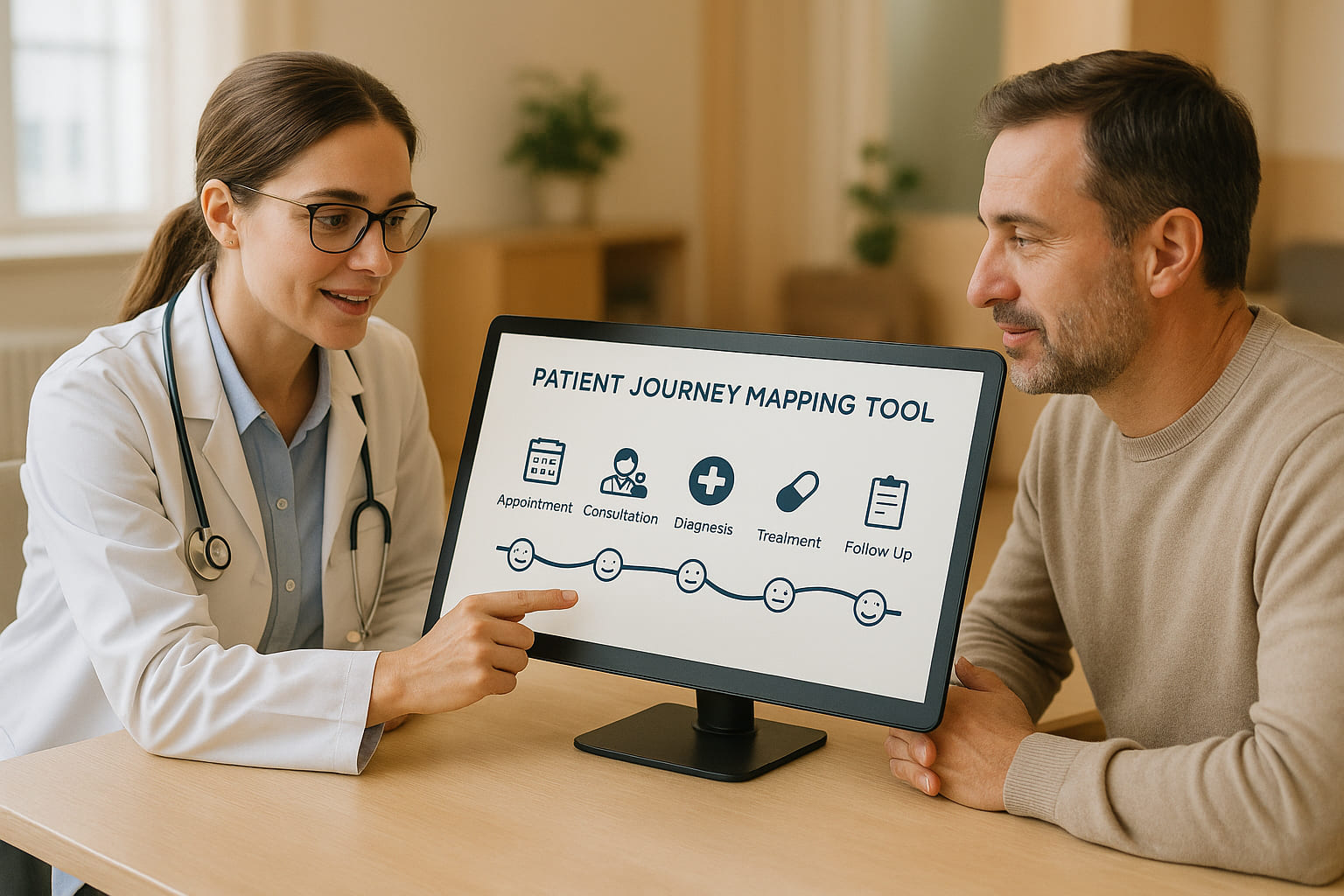Patient Journey Mapping Tool


Key Takeaways
Patient Journey Mapping Tool
Enhance Patient Care with Journey Mapping
In the ever-evolving world of healthcare, understanding the full scope of a patient’s experience is crucial for delivering top-notch care. A well-designed approach to visualizing patient pathways can uncover hidden challenges and opportunities to improve interactions at every step. Whether it’s the anxiety of an initial diagnosis or the relief of a successful follow-up, seeing these moments laid out clearly helps providers make meaningful changes.
Why Visualization Matters in Healthcare
When healthcare teams map out the stages of care, they gain a deeper perspective on what patients go through. This isn’t just about clinical outcomes—it’s about the emotions, interactions, and hurdles that shape someone’s journey through the system. By using a dedicated tool to chart these elements, professionals can spot pain points, like long wait times or unclear communication, and address them proactively. It’s a practical way to align staff efforts with patient needs.
Tailored Insights for Better Outcomes
Every patient story is unique, especially when comparing acute cases to ongoing conditions. A flexible mapping solution lets you customize timelines for different scenarios, ensuring that care strategies are as personalized as possible. This kind of insight fosters trust and builds stronger connections between providers and those they serve.
FAQs
Who can benefit from using this Patient Journey Mapping Tool?
This tool is designed for healthcare professionals, administrators, and organizations who want to better understand and optimize the patient experience. Whether you’re a doctor mapping out a treatment plan for chronic illness or a hospital manager looking to streamline follow-up care, this tool helps you see the full picture. It’s especially useful for identifying gaps in care or moments where patients might feel frustrated or unsupported.
Can I use this tool for different types of patient journeys?
Absolutely! The tool supports multiple patient profiles, so you can create distinct maps for different scenarios, like acute care versus long-term chronic illness management. Just input the relevant stages and touchpoints for each profile, and you’ll get a customized visual that reflects those unique experiences. It’s all about flexibility to match your needs.
Is the output easy to share or integrate into reports?
Yes, the visual map is designed for clarity and can be viewed on-screen with labeled stages and notes. While the tool focuses on functionality over fancy exports, you can easily screenshot or describe the flowchart in your reports. We’ve kept it simple so you can focus on the insights rather than wrestling with complicated software.
Author

Co-Founder and CEO of PatientPartner, a health technology platform that is creating a new type of patient experience for those going through surgery






